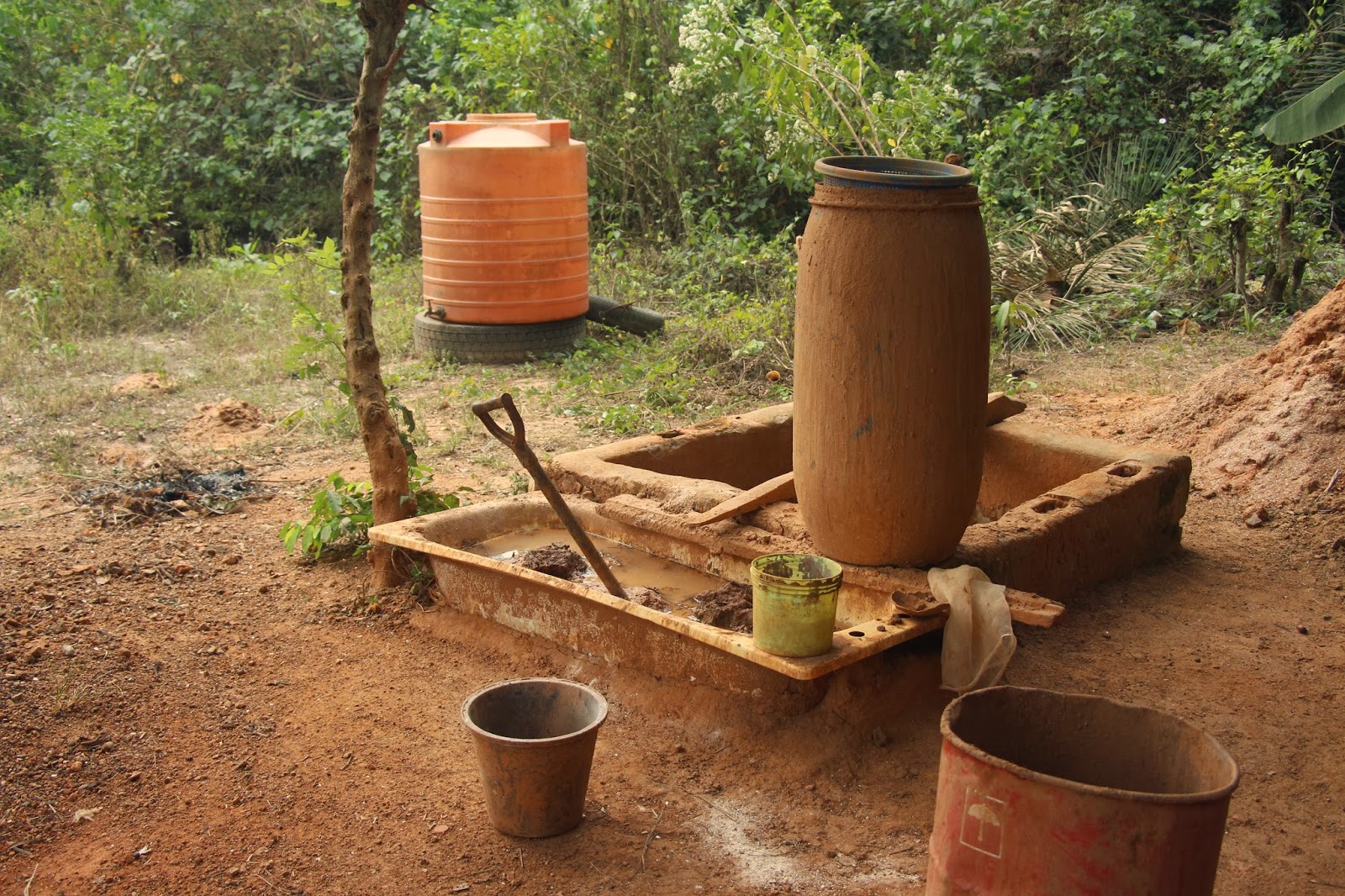(A-wimoweh, a-wimoweh, a-wimoweh, a-wimoweh)
Near the Village, the peaceful village...
The women are making palm oil,
The children go to school,
and the men farm and make potterey
Ee-e-e-oh-mum-a-weh
Today I got to go on an awesome field trip to a village where they specialize in making pottery. I mean, how many people can say they've taken their students to an AFRICAN village for a field trip!?!
Despite several, very vocal, reservations from some students, I was beyond excited to go. I mean, it was my first visit to a village, so overall I was very excited. On the permission slip I asked the kids for donations of old clothing, toys, or any foodstuff that they might have and was completely surprised by the mountain that I had in my classroom this morning.
The fifth and sixth grade classes set off in two buses for the hour ride to Atamora Village in Osun State, Nigeria. When we got there, we were ushered to the pottery shop, where we were introduced to our guide, and master potter who introduced himself as IBK (I think it's short for Ibukunoluwa). After telling the kids about the pottery and asking for any questions, we were allowed to look around and purchase the pottery that we wanted.

.JPG)
Afterwards, we were taken several miles away down a dusty dirt road to the village. IBK introduced us to the village chief. Our guide was wonderful as engaged all of the kids and taught them how to give the proper Yoruba greeting to the chief. Afterwards, we gathered all of the food and other things that we had brought and presented them before the chief. Everything we did was very formal and one of our students who spoke Yoruba was chosen to be the spokesperson for our group.
Prostrating for the chief of the village. The boys bow forward, and women go to their knees.
The chief then welcomed us to the village.
Later we brought our gifts forward for him.
The chief in the white lace and the other elders of the village.
Our 5th and 6th grade classes with the chief and elders.
Afterwards, we were lead through the village to take a look at the village school. Those who were around the village were all working on making palm oil out of the fruit from the palm trees.

The palm berries are crushed and used in a lot of Nigerian cooking.

The oils are separated from the berries in these large barrels that are heated over the fire.
Every bit of the palm tree can be used for some purpose. After the outsides have been used for oil, the seeds are dried and be ground up for making other things.
The ground up seeds can be made into a mash that both provides insulation for the houses, and when they are properly dried, they are great kindling for their fires.
Me and IBK
The village "schoolhouse" was nothing more than a crude structure made out of sheets of tin and tree branches for support. All of the smallest children in the village attend this school while the older children walk over an hour each way to get to their school.
The teacher gets the one chair, as the students gather around to learn.
After our short tour of the village, we hopped back in the buses and traveled to the pottery workshop. We were shown how the dirt is soaked in water to make mud, then strained to get rid of any rocks or other impurities. After the silt is purified, the water has to evaporate to leave the clay which can be used to make the pots.
The first step to making the pottery, is getting the clay.
IBK's daughter is absolutely adorable and a hit with my girls!
My students gathered around, "Ooohing and ahhhing" with rapt attention as IBK demonstrated throwing a vase on the push-petaled pottery wheel. When he was finished, the room exploded with applause. Unfortunately we didn't get the chance to try our hand at making anything, as it was already time to head back.
It was really neat to see their kiln and the way they heat it up with a fire at the bottom.
On our way out, we were shown the kilns and then the formalities at to be made as we said goodbye to the village chief.
Overall, it was quite a success. The students loved it, even the ones who were hesitant to go at first. I enjoyed it so much, that I'd like to take them back again sometime to work with the clay.












































No comments:
Post a Comment